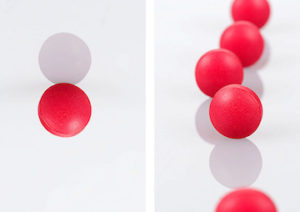America’s Criminal Element
Was lead a driver of the late 20th century surge in violent crime, drops in IQ, cognitive deficits and incidences of ADHD? Mounting evidence at the national, state, city and individual levels -- and across the world -- strongly suggest it was.
Was lead a driver of the late 20th century surge in violent crime, drops in IQ, cognitive deficits and incidences of ADHD? Mounting evidence at the national, state, city and individual levels — and across the world — strongly suggest it was.
Writing in Mother Jones, Kevin Drum tells us that lead used to be everywhere, and it hasn’t disappeared completely. Leaded fuel was banned in 1996 at the end of a long transition to unleaded gasoline. But the element persists in old houses, in paint and in the soil it landed in after being spewed from the tailpipes of cars. From there it’s tracked into houses. It eventually finds its way into our blood.
In New Orleans, Tulane University researcher Howard Mielke found that even at low levels in the soil, lead concentration in blood can rise quickly. And it doesn’t simply soak into the earth. When the weather dries up at the start of the summer, lead gets kicked back up into the atmosphere before eventually returning to the ground. This cycle goes on for years.
Cognitive research shows that once it affects the brain, lead can impair what psychologists call ” ‘executive functions’: emotional regulation, impulse control, attention, verbal reasoning and mental flexibility.” It also inhibits the brain’s ability to transfer information through its various parts. These consequences turn out to be greater for boys than they are for girls.
Other studies link small blood levels with attention deficit and hyperactivity disorder. Jessica Wolpaw Reyes, an Amherst public health policy professor, wrote in a 2007 paper, “even moderately high levels of lead exposure are associated with aggressivity, impulsivity, ADHD and lower IQ. And right there, you’ve practically defined the profile of a violent young offender,” Drum reports.
Rick Nevin, a former consultant for the U.S. Department of Housing and Urban Development, conducted research on childhood lead exposure and juvenile delinquency. In charting the rise and fall in leaded gasoline use, he discovered a simple upside-down “U” trend that matched another pattern showing the variation in violent crime in the U.S. 23 years later. Similar fits turned up in countries across the world, including Australia, Canada, Great Britain, Finland, France, Italy and New Zealand. When asked if he ever found a country that didn’t conform to the theory, Nevin replied: ”No. Not one.”
“[R]esearch on a problem as complex as crime will never be definitive,” Drum writes, “but the association between lead and crime has, in recent years, become pretty overwhelming.” That research should prompt public officials to take action. As Drum outlines below, the savings to virtually all parts of society would be huge, far outweighing the costs of tackling the problem.
But because such reforms would benefit the public rather than delivering immediate profits to the nation’s manifestly self-interested oligarchs, there is little reason to believe the U.S. government would even discuss enacting them anytime soon.
— Posted by Alexander Reed Kelly.
Your support matters…Kevin Drum at Mother Jones:
It’s difficult to put firm numbers to the costs and benefits of lead abatement. But for a rough idea, let’s start with the two biggest costs. Nevin estimates that there are perhaps 16 million pre-1960 houses with lead-painted windows, and replacing them all would cost something like $10 billion per year over 20 years. Soil cleanup in the hardest-hit urban neighborhoods is tougher to get a handle on, with estimates ranging from $2 to $36 per square foot. A rough extrapolation from Mielke’s estimate to clean up New Orleans suggests that a nationwide program might cost another $10 billion per year.
So in round numbers that’s about $20 billion per year for two decades. But the benefits would be huge. Let’s just take a look at the two biggest ones. By Mielke and Zahran’s estimates, if we adopted the soil standard of a country like Norway (roughly 100 ppm or less), it would bring about $30 billion in annual returns from the cognitive benefits alone (higher IQs, and the resulting higher lifetime earnings). Cleaning up old windows might double this. And violent crime reduction would be an even bigger benefit. Estimates here are even more difficult, but Mark Kleiman suggests that a 10 percent drop in crime—a goal that seems reasonable if we get serious about cleaning up the last of our lead problem—could produce benefits as high as $150 billion per year.
Put this all together and the benefits of lead cleanup could be in the neighborhood of $200 billion per year. In other words, an annual investment of $20 billion for 20 years could produce returns of 10-to-1 every single year for decades to come. Those are returns that Wall Street hedge funds can only dream of.
Independent journalism is under threat and overshadowed by heavily funded mainstream media.
You can help level the playing field. Become a member.
Your tax-deductible contribution keeps us digging beneath the headlines to give you thought-provoking, investigative reporting and analysis that unearths what's really happening- without compromise.
Give today to support our courageous, independent journalists.








You need to be a supporter to comment.
There are currently no responses to this article.
Be the first to respond.